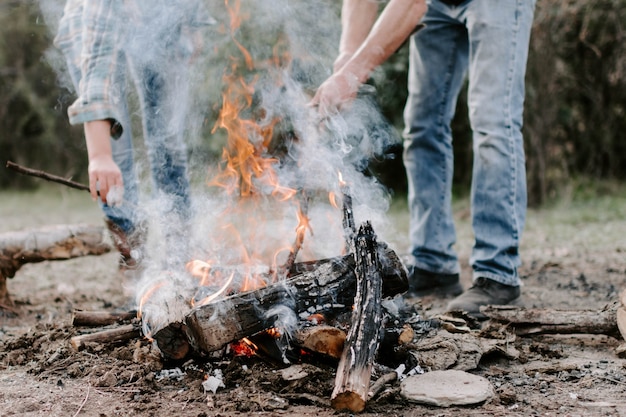What Wood Gives the Most Smoke Flavor?
In the world of barbecue and smoking, the choice of wood can have a significant impact on the flavor of your food. Different types of wood impart distinct flavors to the meat, and understanding which wood gives the most smoke flavor is essential for achieving the desired taste in your dishes.
The Importance of Wood Selection
When it comes to smoking, wood serves as more than just a fuel source. It adds complexity and depth to the flavor profile of the meat, making it a crucial element in the overall cooking process. Each type of wood has unique characteristics that can enhance or complement specific types of food.
While there are various factors to consider when choosing the right wood for smoking, one of the key considerations is the intensity of the smoke flavor it imparts. Some woods produce a milder smoke flavor, while others offer a more robust and pronounced taste.
Woods Known for Strong Smoke Flavor
If you are looking for wood that gives the most smoke flavor, a few options stand out:
- Hickory: Widely recognized as a classic choice for smoking, hickory wood offers a strong and distinct smoky taste. It pairs exceptionally well with pork, beef, and game meats.
- Mesquite: Mesquite wood delivers an intense smoke flavor that can be overpowering if used in excess. It is particularly popular for grilling and smoking beef.
- Oak: Oak wood provides a balanced and versatile smoke flavor that works well with a wide range of meats, making it a popular choice among pitmasters.
Exploring Other Smoky Options
While hickory, mesquite, and oak are renowned for their strong smoke flavor, there are other woods worth considering:
- Apple: Applewood produces a sweet and subtle smoke flavor, making it ideal for poultry, pork, and fish.
- Cherry: Cherry wood imparts a mild and slightly sweet smoke flavor that complements a variety of meats, including poultry and pork.
- Pecan: Pecan wood offers a similar aroma and flavor to hickory but with a milder touch, making it a versatile option for smoking various meats.
“The choice of wood can elevate your barbecue to new heights, so don’t be afraid to experiment and find your favorite smoky combination.”
Ultimately, the choice of wood for smoking depends on personal preference and the type of food being cooked. Experimenting with different wood types can help you discover unique and delicious flavor profiles.
Using Wood Chips and Chunks
When using wood for smoking, it is common to opt for either wood chips or chunks. Wood chips are smaller and burn quickly, releasing smoke faster. They are ideal for shorter cooking times. On the other hand, wood chunks burn slower, producing a more sustained smoke, which is suitable for longer smoking sessions.
It is important to soak wood chips in water before use to prevent them from burning too quickly, while chunks typically do not require soaking due to their larger size.
| Type of Wood | Intensity of Smoke Flavor | Best Meat Pairings |
|---|---|---|
| Hickory | Strong | Pork, beef, game meats |
| Mesquite | Intense | Beef |
| Oak | Balanced | Various meats |
| Apple | Subtle | Poultry, pork, fish |
| Cherry | Mild | Poultry, pork |
| Pecan | Medium | Various meats |
Note: Wood flavors can vary depending on the region and quality.
When it comes to smoking, the wood you choose plays a crucial role in enhancing the smoky flavor. Whether you prefer a bold and robust taste or a milder touch, there is a wide range of woods available to suit your preferences.
So, go ahead and experiment with different woods to find the perfect smoke flavor that will elevate your barbecue to new heights!
